Columns
-
Culture Hacker: What if 5th Graders Ruled Your Storyworld?
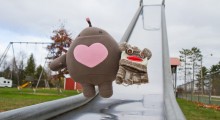
What If 5th Graders Ruled Your Storyworld? By Lance Weiler
-
Lady Vengeance: Genre Picks from the Philadelphia Film Festival
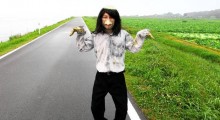
Last night marked the opening of the 2011 Philadelphia Film Festival, and although this year kicked off with the decidedly non-genre film Like Crazy (as opposed to 2010, which began with the enjoyably batshit Black Swan), the festival has a history of featuring well-curated action, horror, science fiction, fantasy and just plain weird fare. For those lucky enough to attend the festival, or simply tracking the program for edification purposes, a good place to start is the festival’s dedicated genre lineup, once going by the name “Danger After Dark” but re-dubbed “The Graveyard Shift” after political infighting dramatically split the group […]
-
The Blue Velvet Project, #32
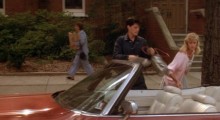
Second #1504, 25:04 The woman in the background carrying groceries has a story to tell. She has her own secrets, in that purse, and for approximately two seconds she becomes a part of Blue Velvet. Perhaps an unremembered part, called forth in the same way that Douglas Gordon’s 24 Hour Psycho—which slowed down Psycho to two frames per second, stretching the film’s duration to 24 hours—made it possible to see details in a new way. In Point Omega, Don DeLillo captures the dislocating feeling of looking very, very closely at something, brought about by a character watching 24 Hour Psycho: […]
-
The Catechism Cataclysm — A Hammer to Nail Review
(Distributed by IFC Midnight, The Catechism Cataclysm opens theatrically at the IFC Center on Wednesday, October 19, 2011. It becomes available on VOD beginning October 26th.) At the heart of Todd Rohal’s work is a very basic concept lost on today’s major theatrical audience who are hypnotized by the tired routine of familiar narrative structure. It’s so simple that it could be lost in the ether of the week’s releases comprised of cults and the continued ascension of the Catfish crew, but I’ll lay it out: Anything Goes. It’s a mindset that will definitely help you take on The Catechism […]
-
The Microbudget Conversation: Down And Dangerous
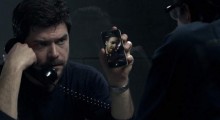
In sticking with our “Do Your Homework” theme, this week on the conversation we dissect one aspect of the micro-budget equation – crowdfunding. As someone who is about to use Kickstarter for the first time, I felt it was best to leave you in the capable hands of someone who had not only successfully met his goal, but who doubled it. Zak Forsman is no stranger to the world of microbudget filmmaking and I love his advice on crafting a great campaign. At IFP week I heard tons of questions from filmmakers on how to wrestle the task of a […]
-
The Blue Velvet Project, #31
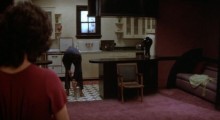
Second #1457, 24:17 The Yellow Man has come and gone. Dorothy’s full attention is on Jeffrey now. This first apartment scene is shot largely from Dorothy’s general angle of vision and in this frame she is dangerously close to the camera. In D.W. Griffith and the Origins of American Narrative Film, Tom Gunning explores the subtle but important changes in camera distance in the early 1900s: The basic camera distance for most shots in 1909 crept closer than the distant tableau found in some of Griffith’s first films. The full shot of the character from head to toe predominates over […]
-
The Blue Velvet Project, #30
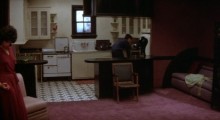
Second #1410, 23:20 The sound. A low hum, like the over-filtered wail of a distant train or a collapsing carnival from some fevered dream. Within a few seconds of this shot that sound creeps into the film, and by the time the Yellow Man knocks at the door (roughly eight seconds after this frame) it will feel as if the sound is seeping out from the architecture of the room itself. Dorothy, in her red dress, pretends to attend to her fingernails, a sure sign that she already desires Jeffrey. The pink, plush, un-patterned carpeting. The lone chair, facing forward, […]
-
The Blue Velvet Project, #29
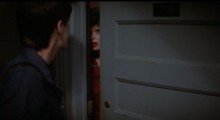
Second #1363, 22:43 The fact that Dorothy’s frightened gaze fixes on the camera—on us—means something, but what? The frame, bisected by the vertical gap that leads into her apartment, is given dark force by the accumulated black that collects behind Jeffrey. He’s not entering a “dark world,” but bringing a dark world into her apartment. A counter-reading of Blue Velvet, based on frames like this, suggests that it is Jeffrey’s presence–as much as Frank’s–that invokes the film’s dark angels. Laura Mulvey, in Death 24x a Second, wrote that: Now that films on DVD are indexed in chapters, the linearity associated […]
-
Margaret — A Hammer to Nail Review
(Without any fanfare, Margaret was released theatrically by Fox Searchlight on Friday, September 30, 2011. Visit the film’s official website to learn more.) Oh boy. Oh wow. If your idea of a rewarding time at the movies is a symphonic drama that aches with the blood, sweat and tears of real life while simultaneously upholding the finest traditions of opera, of theater, of poetry, of literature, look no further than Kenneth Lonergan’s Margaret. Much has been written about the unfortunate legal brouhaha surrounding the film’s post-production — it was shot in 2005 while here we are twiddling our thumbs in […]
-
The Blue Velvet Project, #28
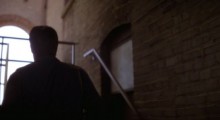
Second #1316, 21:56 A stairway exposed / A monastic image / Deep River Apartments / The silence of the film / The sound of sound / Has come apart / I’d like to think / In curved brick archways / The light / The 90 degree angles / Against that light / The Bug Man / Auden: “The bug whose view is balked by grass” / The steady climbing / Of the stairs / Then dark / Then Frank / What light will come of this? / The metal handrail across the door / A chance to stop the frame […]
